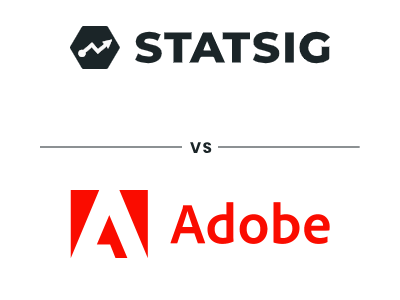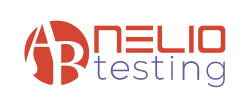
Adobe Target has become a powerful tool in redefining how businesses personalize online experiences, but have you wondered what the alternatives are?
Adobe Target lets you carry out tests, view data, and facilitate the implementation of modifications that would increase engagement and conversions.
Tools like Adobe Target can help you craft relevant and personalized content in the following ways:
Analyzing customer data to enhance their experiences.
Creating and deploying omnichannel tests.
Segmenting your audience.
Content targeting.
With all that being said, some may think that Adobe Target is the one and only choice—that couldn’t be further from the truth. In this article, we’ll review the top Adobe Target alternatives and why they stand out.
The top 4 Adobe Target alternatives are:
What is Adobe Target?
Self-described as the go-to solution for A/B testing and optimizing every customer experience. Adobe Target provides AI-powered content testing, customization, and automation at scale.
When deployed, the tool can help you provide your audience with content suited to their needs.
When using Adobe Target, marketers only set their objectives and parameters. The tool provides insights into the most effective content for reaching the target audience.
Priced to fit different budgets, Adobe Target has flexible configuration and licensing options for small and large businesses. Adobe Target prices are not published online, but the exact subscription you’ll pay depends on the features you want.
Notable Adobe Target features:
A/B testing.
Standard targeting and audience segmentation.
Reports and dashboards.
Standard targeting.
Reporting and analytics.
QA Testing
Many Adobe Target complained about the inability to track conversion data. Since revenue isn’t captured out of the box, most users end up deploying the Adobe Experience Cloud Manager tool to track conversion data.
Technical issues, such as difficulties editing activities on password-protected web pages, were also noted. For this reason, we sought to establish Adobe Target alternatives that offer superior A/B testing.
Related: Compare Statsig to Adobe Target + Analytics, head to head.
The Top 4 Adobe Target alternatives for testing

1. Statsig
Pricing model:
As an Adobe Target alternative for testing, Statsig offers free feature flags, predictable prices based on usage, and unlimited seats:
The Starter package allows a max of 500 million free events and an abundant program for startups.
The Pro package starts at $150 monthly.
Notable Statsig features:
An advanced Stats Engine.
Pricing is based on usage rather than seats.
Statsig is a plug-and-play A/B testing solution.
It comes with experiment layers, dynamic configurations, and holdouts.
Unlimited MAU.
It offers warehouse-native and cloud-based experimentation as well as cloud-hosted.
Summary:
Stastig allows users to optimize their content to suit users’ needs. This is because Statsig offers cloud-based and warehouse-native product experimentation and user analysis tools.
Watch out for: It’s essential to note that Statsig isn’t built for marketing audiences, although it adds new marketing features every day. Its product experimentation is straightforward, but the features primarily target product managers and developers looking to optimize their SaaS products.
Related reading: Statsig: Open source without compromising critical features
Statsig vs Adobe Target & Analytics, head to head


2. AB Tasty
Pricing model
AB Tasty has a tiered pricing model, and the exact amount you’ll pay depends on the features you will use. Pricing plans and options are quotation-based, and the A/B testing tool doesn’t offer a free trial.
Generally, AB Tasty’s plans fall into these product categories:
Experimentation.
Personalization.
Release management & feature experimentation.
Customer success.
Enterprise-grade & security features.
Notable AB Tasty features:
Data-driven content optimization.
Server-side A/B testing.
Audience segmentation and targeting.
Progressive deployment.
Summary:
AB Tasty is a SaaS-based tool for marketing teams looking to optimize their content and increase customer engagement rates. As one of the leading Adobe Target alternatives for testing, AB Tasty is widely used by businesses of all sizes, from SMEs to enterprise-level organizations like USA Today, Sephora, and Cartier.
A notable feature of this A/B testing tool is its compatibility with iOS, Android, and responsive sites. Furthermore, AB Tasty is the ultimate solution for undertaking all types of A/B and multivariate tests with minimal tech integration and full autonomy.
For small marketing teams, AB Tasty can be an effective solution for garnering user insights, creating roadmaps, A/B testing, and results analysis. Users also applaud the relative ease of setting up this tool without tech support.
What out for: Despite its impressive capabilities, some AB Tasty users noted that page load time significantly impacts the Javascript Library widget. In addition, the tool’s reporting lags behind that of competitors like Statsig. AB Tasty also has a considerable learning curve, so users often have to take time to understand the tool better to ensure effective deployment.
3. Dynamic Yield
Pricing model
Users pay a SaaS license subscription based on the average number of visitors using Dynamic Yield's web-related personalization products. Dynamic Yield also charges a one-off onboarding, adoption fee, and ongoing personalization program support fees.
Notable features:
Content personalization.
Testing and optimization.
Audience identification and analysis.
Multivariate testing (limited).
Advanced customer segmentation, including user and geographic attributes.
Summary:
Dynamic Yield is an Adobe Target alternative designed to help businesses deliver personalized, synchronized, and optimized customer experiences. Both marketing and developer teams can deploy it, boasting easy setup and unmatched tracking performance.
A brainchild of Mastercard, Dynamic Yield allows developers, marketers, and product managers to match content algorithmically. Moreover, customers can be segmented easily, and offers are made to everyone based on their needs.
Users point out that Dynamic Yield is an excellent A/B testing ad personalization tool with a friendly interface and unmatched support. Furthermore, getting it going is a relative breeze.
The tool is particularly helpful to those who want a high-level overview of their content personalization campaigns, product updates, and site performance. It can help companies build robust personalization capabilities and adjust according to customer and industry demands.
What out for: Poor campaign performance reporting is the major downside of the Dynamic Yield tool. One must feed Dynamic Yield campaign data into their primary reporting tool to analyze segmentation and campaign results to receive deeper analyses.

4. Nelio A/B Testing
Pricing options:
Nelio's A/B basic plan is priced at $24 with 5,000 guaranteed page views.
The professional plan costs $74 (35,000 tested page views).
The enterprise plan costs $214 (200,000 tested page views).
Notable features:
A/B testing.
Split testing.
Multivariate testing.
Audience targeting.
Heat maps.
Statistical relevance analysis.
Summary:
Nelio A/B Testing is a tool for creating and A/B-testing multiple versions of your WordPress website to pinpoint the content that suits your audience best, thus improving conversion. This tool tests everything: web pages, posts, custom types, themes, widgets, or headlines.
In Nelio A/B Testing, you have a tool with all the features you need to optimize your content and reach each audience member in real time. The tool helps you define, manage, and track your A/B tests, thanks to the i-built Heatmaps feature.
When deployed, Nelio can test feature images, alternative names, and product descriptions, enabling you to optimize your content even further. The best part is that all the insights you need are displayed on an intuitive custom WordPress dashboard with a familiar user experience.
What out for: Nelio A/B Testing primarily targets WordPress websites, which limits its deployment significantly. Despite its versatility, Nelio doesn’t have a free trial. This may harm small business users who want to try it before committing their money. You should also expect a steep learning curve, especially when undertaking A/B testing for the first time using Nelio.
Get started now!


